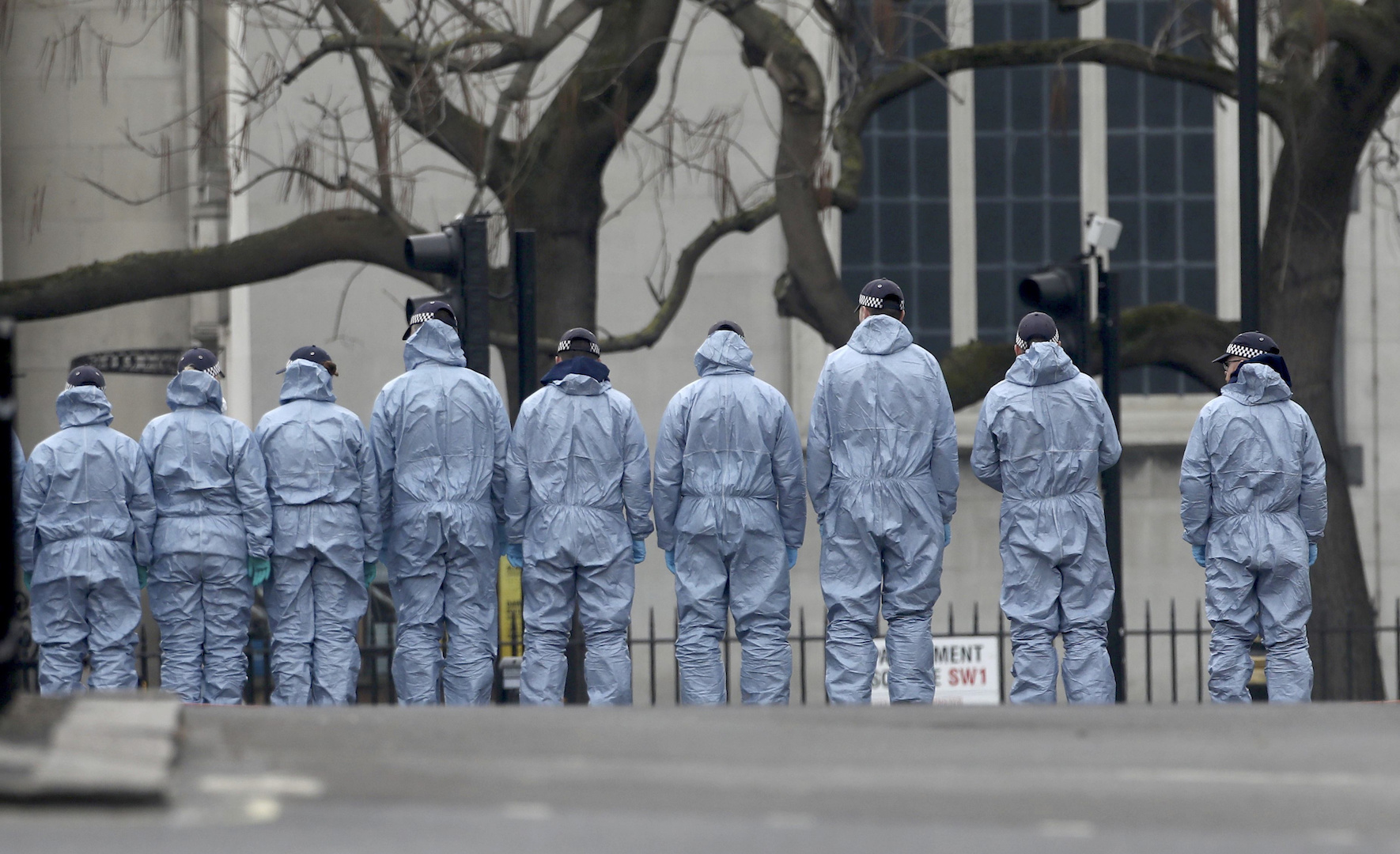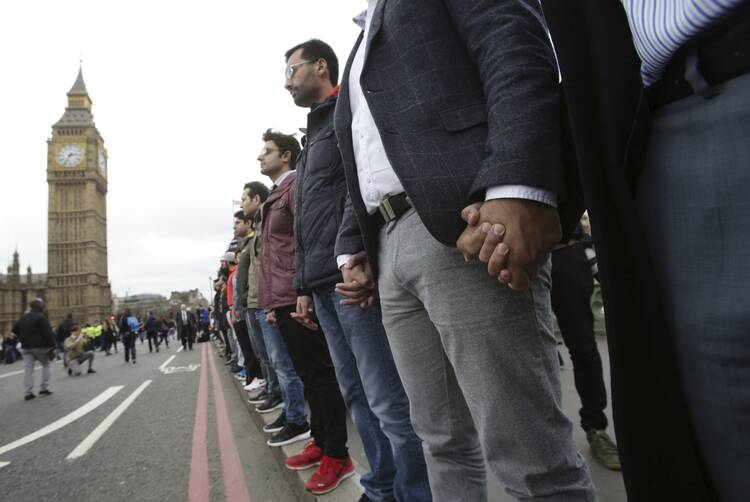Reaction to London’s worst terrorist atrocity since 2007 has been not at all what one might have predicted. In the course of one minute and 22 seconds, driving a rented car at high speed across Westminster Bridge and onto the pavement, one man killed five people and injured dozens more before being shot dead by police just inside the gate to Parliament. One of his victims was a Metropolitan Police officer, who had been stabbed to death. One week on several wounded remain critically ill in the city’s hospitals.
But across the capital Londoners have been resolute, demonstrating an absolute refusal to be intimidated by this or any terror event. What has been surprising—and gratifying—is how the city’s diverse population has responded almost with one voice, rejecting terrorism’s usual objective of dividing and fracturing communities.
Press reports now indicate that the offender was not an Islamic terrorist in the usual understanding of the phrase. Khalid Masood was a native-born Englishman, registered at birth as Adrian Elms. He had used several other aliases on occasion. Despite an ISIS claim that Masood was one of its “soldiers,” any links to the so-called Islamic State appear tenuous at best.
Across the capital Londoners have been resolute, demonstrating an absolute refusal to be intimidated by this or any terror event.
Mr. Masood had a violent past. He had converted to Islam at some indeterminate point but had no known links to any militant groups; acquaintances suggested that before his rampage he might have been trying to reform his life by converting to Islam. This was a troubled individual with more a history of criminality than terrorism.
It is now clear that Mr. Masood acted alone, perhaps under the influence of ISIS internet propaganda. Speaking for the Metropolitan Police Service, Deputy Commissioner Neil Basu said, “We must all accept that there is a possibility we will never understand why he did this. That understanding may have died with him. Nevertheless, we are determined to understand if Masood was a lone actor inspired by terrorist propaganda or if others have encouraged, supported or directed him."
Subsequently, several arrests were made in London and in Birmingham. Most of those arrested were later released, but a huge investigation continues to confirm that Masood was not part of a larger plot. The official government line has been that the killer was a “peripheral figure … not part of the current intelligence picture,” although he was known to the police. London remains at the second-highest state of alert, officially defined as where an attack being “highly likely” but the authorities insist that the Westminster Bridge incident has not increased that likelihood.
The death of Metropolitan Police Constable Keith Palmer, a family man of 48 years of age, horrified the capital. Members of Parliament, visibly moved, spoke warmly of the officer whom many knew by name, he so often greeted them as they arrived each morning at Parliament. He will be given a full police service funeral from Southwark Cathedral on April 10.

Slayings of police officers are still rare in Britain, and many of our police remain unarmed, although at the moment most police in central London are carrying weapons. In a moving display of solidarity and defiance, exactly one week to the minute after the tragedy, thousands of Metropolitan police officers joined hands to walk the length of the bridge to show terrorists “they will not achieve anything” by attacking the capital or even their colleagues.
Members of the Ahmadiyya Muslim Youth Association, wearing T-shirts bearing the message: “I am a Muslim, ask me anything,” mingled with the Metropolitan officers. Many faith leaders joined in. Just a few days previously, hundreds of Muslim women, mostly dressed in burqas, had similarly joined hands and lined the bridge. This kind of unified response speaks of a new spirit emerging in the capital.
At a vigil in nearby Trafalgar Square on the day after the attack, Mayor Sadiq Khan, a Muslim and native Londoner, spoke with dignified defiance of this new unity and identity. London is, said Sadiq, “the world’s greatest city,” and Londoners “will never be cowed by terrorism.”
In the aftermath of the attack only a tiny increase in Islamophobic incidents were reported across the city. After previous terror strikes those incidents had been recorded in higher numbers. And a version of the London Underground logo, so well-known around the world, replaced a station name with the slogan “We Are Not Afraid.” The image went viral on social media as did a video clip of the celebrated actor Sir Ian McKellen reading William Wordsworth’s “Lines written on Westminster Bridge.”
But the reaction to this tragedy has been overwhelmingly a London, rather than a national phenomenon. Immigration has been as much a political controversy in Britain as in many countries but that tension has been markedly less in London, a city that has learned to value difference and diversity. As Britain struggles with its identity and faces certain break-up into its four component nations over the next few years, London, for so long more a collection of neighborhoods and contiguous small towns and boroughs, may be finding a new, tangible solidarity and a distinct individuality.
Everyone knows of the city’s storied “Blitz Spirit” from World War II, but that was then—before London became a world city—and this is now, when it has become the most diverse city the world has ever seen. This is different spirit altogether.
As Mr. Wordsworth put it: “Dull would he be of soul who could pass by/ A sight so touching in its majesty.”








